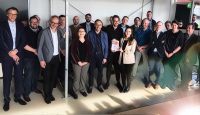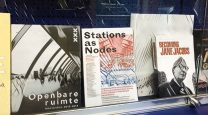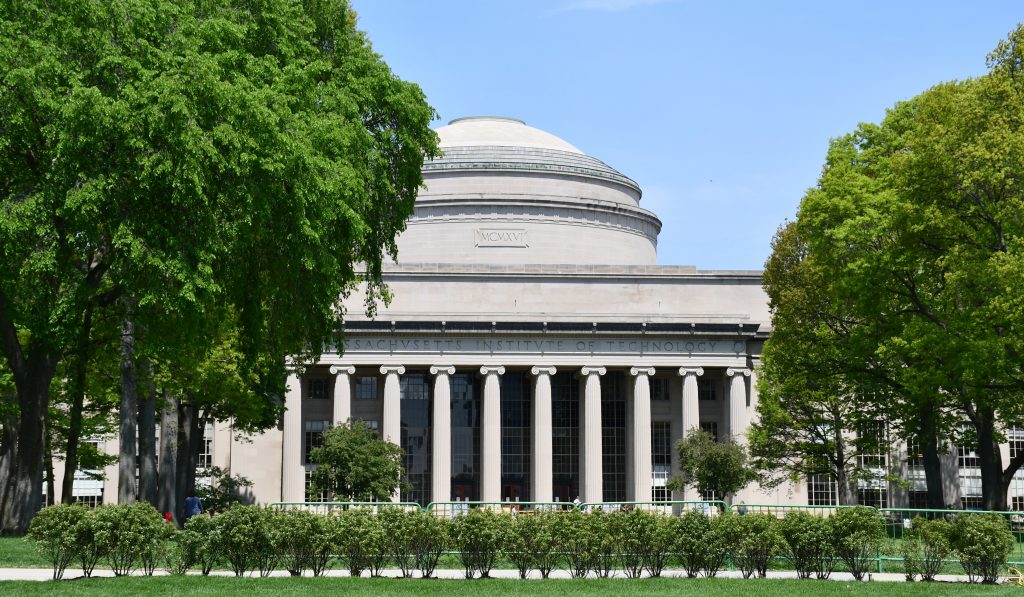A professional often thinks in the existing structures from practice, in defined tasks and ditto responsibilities. Students think beyond. It is one of the reasons that students and professionals have been linked to each other during a parallel running professional design study and master studio, called ‘The City of the Future’.
Continue reading
Category Archives: metropolitan innovation
Graduation Ceremony MADE
The first lucky 7 students have graduated from the MSc MADE (Metropolitan Analysis, Design and Engineering) programme! They received their well-earned MSc diploma during a festive graduation ceremony at AMS Institute. Two years ago, they joined AMS Institute together with elven others for classes on metropolitan challenges, entrepreneurial skills, and data analysis in the urban context. Now they have developed to be the first generation of interdisciplinary metropolitan innovators.

On September 24th, we have celebrated this milestone together with their family and friends when receiving their joint degree diplomas from Delft University of Technology and Wageningen University & Research. This is extra special as these are the first engineering degrees that are handed out in the city of Amsterdam in over 450 years! It has been quite an adventure to write this progrogramme from 2016 until its successful accreditation, and, subsequently, I am happy to have been the first director of this programme. Continue reading
Smart Urban Mobility

Why is smart mobility essential in urban development?
Like many metropolitan areas, the Amsterdam metropolis is prospering, the city is growing, new homes are being built, new companies and talent continue to relocate here, and the city is becoming increasingly popular with tourists. If residents, visitors, commuters, and others continue to travel as they do today, all forms of transport combined will grow in the coming years between 20% and 40%, and traffic will grind to a halt.
Good accessibility – with smart connections within the city and with the rest of the country and world – makes an important contribution to Amsterdam’s attractiveness for all travelers. Moreover, particularly in Amsterdam, social diversity and inclusivity are valued, which means providing everyone with equal access to good liveability and transport.
Mobility operates as the intersection between the city’s infrastructure and its city’s inhabitants. It is the central link in the well-functioning of a city and a key element in the organization of multimodal transport. In doing so, it is not only about the connection to other areas, but also about sowing together the fabric of the area and the movement of people in the area itself.
Continue reading
Mobility and Urban Development
Participants of the 2019 summer school will explore interdisciplinary approaches towards a sustainable integration of designing disciplines for smart urban mobility and the new urban development area Haven-Stad in Amsterdam. They will deal with the following themes: the role and function of smart urban mobility, including mobility as a service (MaaS) and emerging mobility options; travel behaviour of a growing number of users; sustainability challenges and fairness in transport planning; public and semi-public spaces (and social dynamics therein); exploration of alternative, marginal and emerging social uses of urban developments as meeting places and culture; urban integration in the overall mobility system; the interface between architecture and infrastructure with the urban fabric; programming of future transport nodes and the accessibility to and from such transport hubs of all types of smart mobilities (e.g. conventional public transport, shared mobility, autonomous taxis, etc.).
Stations as Nodes
 .
. 
Official book launch Stations as Nodes
See also: Metropolitan Stations and Integrated Mobility Challenges
Metropolitan Stations
Places for Change and Innovation
A train station has always been a space for many and it is about time to be approached and designed as such. The urgency is there. Stations have become an intermodal hub with a large crowd being present. From a human perspective, it makes sense: Stations are part of the larger network of public spaces, indoors – outdoors, and interlink other hybrid places and buildings. The more people flock to the city, the more move and stay at stations and/or elsewhere close-by. The role of stations in the network strengthens. More and different people are present. As such, from the observation that the whole is more than the sum of fixed demarcated elements, ever-changing human hubs are perfect settings for place-based innovation in design and by design, because where people move, society changes, and where strangers meet change takes place.

Read the article: Metropolitan Stations, Places for Change and Innovation (2018) by Maurice Harteveld (c)
See also: Station as Nodes and Integrated Mobility Challenges
Moving and Meeting in the Boston Metro
In a flying visit to Greater Boston, particular urban design themes related to the city of the future have become manifest once again. On the one hand, thoughts on infrastructure and public space need to be interrelated. People move in various ways, yet the faster they move (most likely by individual or collective transport), the less exchange between them will happen. Although highways and rail tracks increase accessibility and connectivity, and are of extreme importance for the metropolis, it is known that these bundles may cause barriers for those present locally, on both sides to meet and greet. The impact of the Central Artery tunnel project and Rose F. Kennedy greenway on the Boston downtown waterfront is a classic example in showing the importance of designing public places and creating walkable space in a dense urban development. Pedestrian spaces, preferably supported with undergoing public transit or smart hubs alike, is only not less space consuming, but also serves the gathering of people in a better way, hence it serves coincidental exchanges between them. The images of a ‘before’ and ‘after’ the dramatic transformation are a clear witness of this. The same is true in the recently developed business improvement districts. In a opposite way the surplus of fast lane infrastructure generated a lack of public place thus human exchange. The transit hubs of the North and South Station areas may be multi-layered centrality hubs which easily could follow the same strategy, yet here little of this is visible here. Current transformation may be just a first step in improving the stations’ premises. With their high potential in the public spheres, they will be definitively the next challenging urban transformation areas in need to be directed by the City. On the other hand, the City as the public government is not alone in this. Other non-gov stakeholders and pro-active citizens join in the urban development too. Historic Washington and Summer Street areas show what can be the impact collaborative improvements and community development. In fact every citizen has impact simply by being present in the city. People are the prime actors in the urban networks and physical systems. They make the urban space public. It is omnipresent when one would simply walk from School-Franklin, Bedford West, and Park Plaza to City Hall, and trace whatever they do and sense in the city. It adds another perspective to future intervention areas.

Boston, 15-17 May 2018
Massachusetts Institute of Technology (MIT)
Boston Planning & Development Agency (BPDA)
Harvard Graduate School of Design (GSD)
